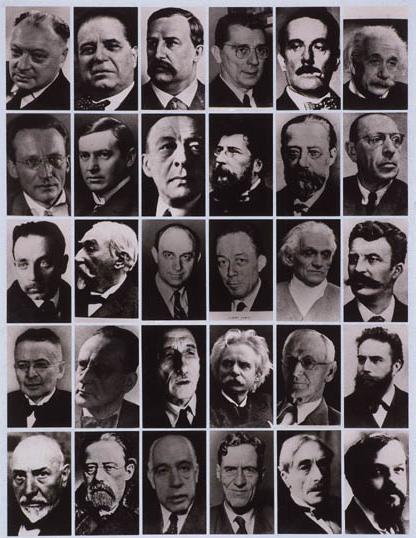Gerhard Richter
dal 5/12/2003 al 14/3/2004
Segnalato da
5/12/2003
Gerhard Richter
Whitechapel, London
Atlas provides a unique insight into Richter's practice. Some photographs have been marked and altered, revealing the process by which the artist transfers images onto canvas. Others, such as photographs of concentration camp victims, were never used, their horrors for Richter, 'unpaintable'.

Atlas
Gerhard Richter is one of the world’s most influential contemporary artists. Over the past 40 years he has re-defined the medium of painting, combining a conceptual approach with an elusive beauty. His mastery of genres has spanned landscape, portraiture, still life and abstraction. This exhibition will be the first major presentation of the artist’s work since his Tate retrospective in 1991.
Lying at the heart of his practice is an ongoing project that commenced in 1962 and continues to this day. Atlas brings together over 5,000 photographs, drawings, diagrams and proposals that are the foundation of his work. This vast archive, updated for London, will be juxtaposed with important paintings that represent the defining moments of Richter’s career.
Richter often bases his paintings on photographs he has made, or found, in books, magazines and newspapers. His repertoire of images ranges from the private realm of family and friends to the public arena of news and events. These are transformed through paint, Richter’s muted yet luminous palette, flat surface and ‘out of focus’ imagery taking his figurative work into a realm between documentary and history painting. By contrast his abstract works are vividly coloured yet austerely rational or coolly expressive.
Atlas provides a unique insight into Richter’s practice. Some photographs have been marked and altered, revealing the process by which the artist transfers images onto canvas. Others, such as photographs of concentration camp victims, were never used, their horrors for Richter, ‘unpaintable’. Numerous sketches, notes, diagrams and proposals for exhibitions and public commissions reveal a dialogue with architecture. Alongside real projects are imagined exhibitions and dreamy utopian cloud scapes.
Atlas also constitutes an overview of the historical, political and social events of the postwar era in Europe, ranging from culturally suppressed mementoes of the Nazis, or the political convulsions around the Baader-Meinhof, to the rise of consumer culture and the dominance of the mass media.
Breathtaking in its scale and ambition, Atlas bears testament to Gerhard Richter’s restless enquiry into the nature of representation.
· Gerhard Richter was born in Dresden, Germany, in 1932 and grew up under the Third Reich and National Socialism. He made Communist banners for the government of the German Democratic Republic before enrolling in the mural painting department at the Dresden Art Academy. He moved to West Germany in 1961, shortly before the Berlin Wall was erected, where he enrolled in the Academy of Art, Düsseldorf in 1961. His fellow students and close friends included Blinky Palermo and Sigmar Polke, and in 1971 he joined the Academy faculty. Richter held his first solo exhibition at Galerie Heiner Friedrich in 1964, and since then has exhibited internationally, including several editions of the Venice Biennale and Documenta. His latest retrospective, organised by MoMA New York, toured the United States in 2002 and early 2003.
· Gerhard Richter: Atlas is organised by Whitechapel and curated by Andrea Tarsia, Head of Exhibitions & Projects with guest curator Helmut Friedel, Director of Kunstbau Lenbachhaus, Munich
Visitor information
Exhibition opening hours: Tuesday – Sunday 11am-6pm
Late night Thursdays until 9pm
Admission: £8 / £4 concessions, free on Thursdays 6 – 9pm
Nearest tube: Aldgate East
T +44 (0) 20 7522 7888
For further press information please contact
Rachel Mapplebeck on + 44 (0)20 7522 7880, 07811 456806
David Gleeson + 44 (0)20 7522 7871
Whitechapel
80-82 Whitechapel High Street, E1 7QX London
tel 020 75227888



